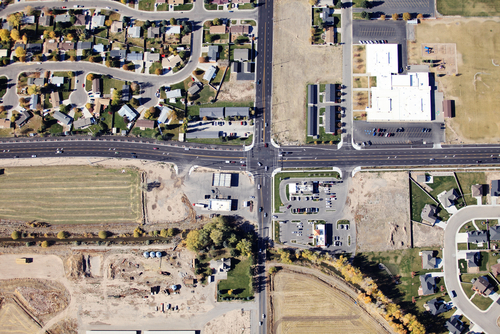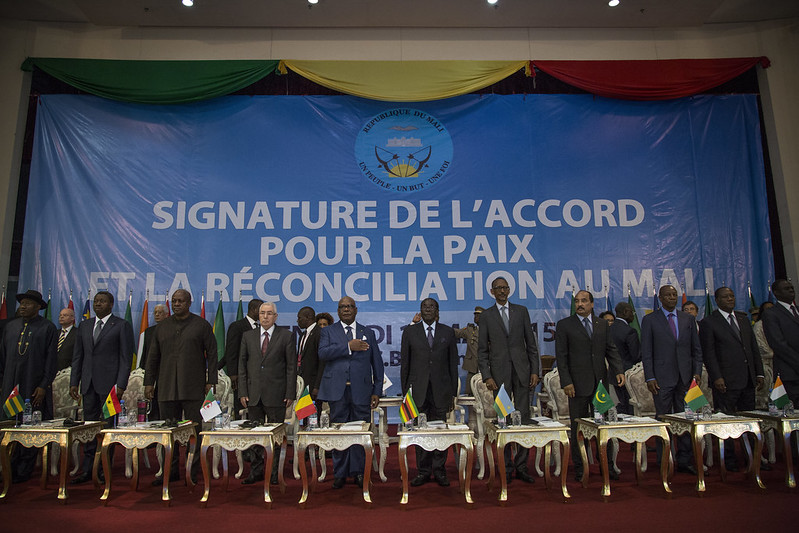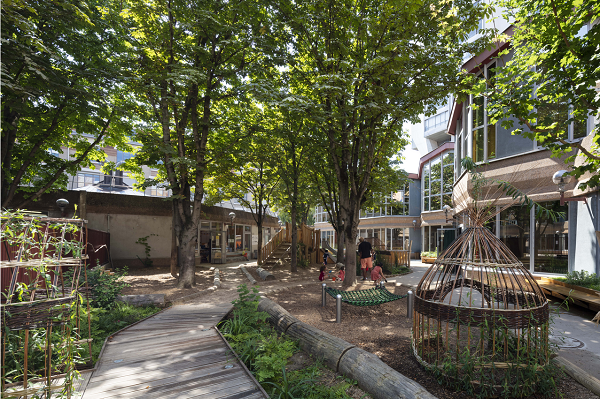
Schoolyard OASIS, Infant school Emeriau – July 2021 – ©Théo Ménivard / CAUE de Paris.
Like all large cities, Paris is, and will continue to be, particularly impacted by climate change. It is also a city brimming with potential for socialisation, education, and innovation. As part of its resilience strategy to address major challenges of the 21st century, the city of Paris launched the ‘OASIS’ (Openness, Adaptation, Sensitisation, Innovation and Social ties) program in 2018 to adapt schoolyards and buildings to climate change while using them as a vector layer to transform social interactions.
Alongside many partners(1)Besides city hall and schools, it includes the Council of Architecture, Urbanism and Environment of Paris (CAUE 75), the Educational League, Météo France, as well as academics from the Paris Interdisciplinary Energy Research Institute (LIED) at the University of Paris and from the Laboratory for Interdisciplinary Evaluation of Public Policies (LIEPP) at Sciences Po. This program is co-funded with 5 million euros from the European Regional Development Fund (ERDF), which supports the European Union’s cohesion policy., Sciences Po’s Laboratory for Interdisciplinary Evaluation of Public Policies (LIEPP) has been associated with the Schoolyard OASIS project since its inception in order to evaluate the results for each step and objective.
Interview with Carlo Barone, researcher at the Research Center for Social Inequalities, affiliated with the LIEPP, and Anne-Cécile Caseau, member of the OASIS research team.
Could you provide a brief overview of the project and its main objectives?
Schoolyards account for over 70 hectares of surface and are evenly distributed across the territory. Often covered with asphalt and so impermeable, these spaces massively contribute to the urban trapped heat effect. Furthermore, they are closed to the public on weekends, even though Paris suffers from a lack of social gathering spaces that are accessible to all. The OASIS project aims at gradually transforming schoolyards into ‘islands of freshness’ with plants generating shade, natural and innovative materials, less asphalt, permeable soil, and the installation of fountains.
The project also contributes to pedagogical and social goals, serving as both objectives and tools for pedagogical activities: raising awareness and educating students about environmental issues as well as promoting social ties and involvement within neighbourhoods.
This transformation seeks to involve as much as possible the educational communities and the primary users of these schoolyards – children and adolescents – by developing a co-conception methodology. The OASIS project also aims to raise awareness, educate, and engage adult and youth citizens in improving their living conditions, embracing new uses, and journeying towards a more varied use and appropriation of these neighbourhood spaces.
OASIS campuses are purposefully open for other uses outside of school hours in order to strengthen community ties and offer a place of refuge for vulnerable populations during heatwaves. The thinking behind the adaptation and uses of schoolyards also aims to break out of certain stereotypical paradigms: girls versus boys, small versus big, calm versus energetic; each person can evolve more freely in the recreational space of these renewed campuses.
How was the Laboratory for Interdisciplinary Evaluation of Public Policies involved?
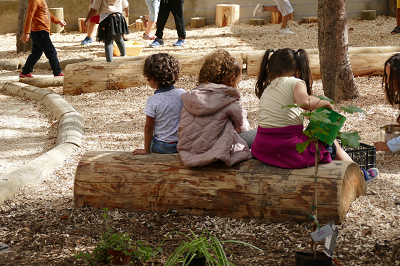
Schoolyard OASIS, Infant school Emeriau – July 2021 – © CAUE de Paris.
The LIEPP evaluated the project’s social impact in three areas: the participatory co-conception approach aimed at involving all stakeholders, including students; the evolution of the use of schoolyards by students and the residents of the surrounding neighbourhoods; changes in students’ knowledge and attitudes about climate change. Several primary and lower secondary schools were chosen for observation sessions before and after the project’s phases were completed.
Regarding the first aspect, researchers followed in situ the co-development phase with participant observation methods involving workshops and citizen assemblies associating educational communities, architects from the Council of Architecture, Urbanism and the Environment (CAUE), the Educational League, children and parents.
The uses of schoolyards were evaluated by measuring the diversity across gender and age of the student groups interacting in the schoolyards, their cooperation and conflict dynamics, and their interactions with nature. These direct observations measures were complemented by qualitative observations and interviews with educational teams. ‘Knowledge of climate change effects,’ was measured via questionnaires administered to students and interviews with leaders of workshops using materials created by Météo France.
What are the main findings of this study?
Three major developments were observed following this project: gender diversity grew among groups of students interacting in the courtyards, conflict levels were moderately reduced, and interactions with natural elements increased. Team games around cabins and mounds competed with traditionally male ball games. However, while this observation applies to preschools and elementary schools, it does not apply to lower secondary schools. In the latter, adolescent socialisation and gender relations are less tied to the physical space, which explains this exception. Schoolyards started to be open to neighbourhood residents on the weekends during the researchers’ fieldwork and initial observations indicate that residents are beginning to make use of these spaces and enjoy this new opportunity.
Regarding the participative approach, we observed that the organised workshops elicited strong interest from students and yielded compelling results. The facilitators effectively fostered children’s involvement. The system for collecting ideas and proposals for the schoolyards from the students with the help of plans and models yielded a certain level of homogenisation in the proposals that also shaped the suggestions made by the adults (educational community, architects, landscape architects, institutions, politicians). Another notable finding is that the approach is of great importance for the civic education of students and their initiation to public action.
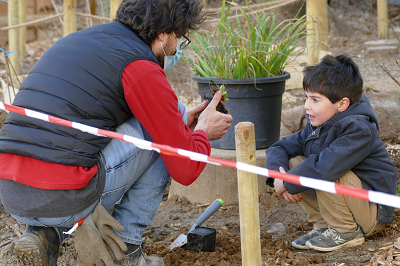
Participatory planting site – Infant School Dolent – Mach 2021 – ©CAUE de Paris.
With regard to students’ knowledge and interest in climate change issues, Météo France proposed for ten partner schools a pedagogical course on meteorology and climatology in the form of workshops and booklets. The questionnaires administered before the beginning of this training showed that the notion of climate change was blurry in students’ minds, and that students had little knowledge of the factors affecting global warming. Climate change is not seen as dangerous for many students, or is highly misunderstood. We also observed a certain fatalism regarding climate change: 36% of interviewed students do not believe that we can do anything about it. We found major disparities between institutions in the questionnaire results, depending on the institution’s goals and educational teams’ interest in the matter. Students generally appreciated these workshops and teachers found that these subjects should be discussed at school. Researchers made recommendations to tailor the learning materials and tools by the level of education, and adapt the workshops to course scheduling constraints.
To learn more : Read the interview with Martin Hendel (LIED), co-director of the environmental policy cluster at LIEPP about the evaluation of the climate impact of Oasus campuses (in French)
Carlo Barone is a university professor in sociology and researcher at the Research Center for Social Inequalities (CRIS), director of the Educational policies cluster at LIEPP, and head of the OASIS project at LIEPP. Anne-Cécile Caseau, holds a PhD in political science and gender studies, and was a research assistant for the OASIS project at LIEPP. She is currently a researcher at the National Institute for Youth and Popular Education (INJEP).
Notes
| ↑1 | Besides city hall and schools, it includes the Council of Architecture, Urbanism and Environment of Paris (CAUE 75), the Educational League, Météo France, as well as academics from the Paris Interdisciplinary Energy Research Institute (LIED) at the University of Paris and from the Laboratory for Interdisciplinary Evaluation of Public Policies (LIEPP) at Sciences Po. This program is co-funded with 5 million euros from the European Regional Development Fund (ERDF), which supports the European Union’s cohesion policy. |
|---|


